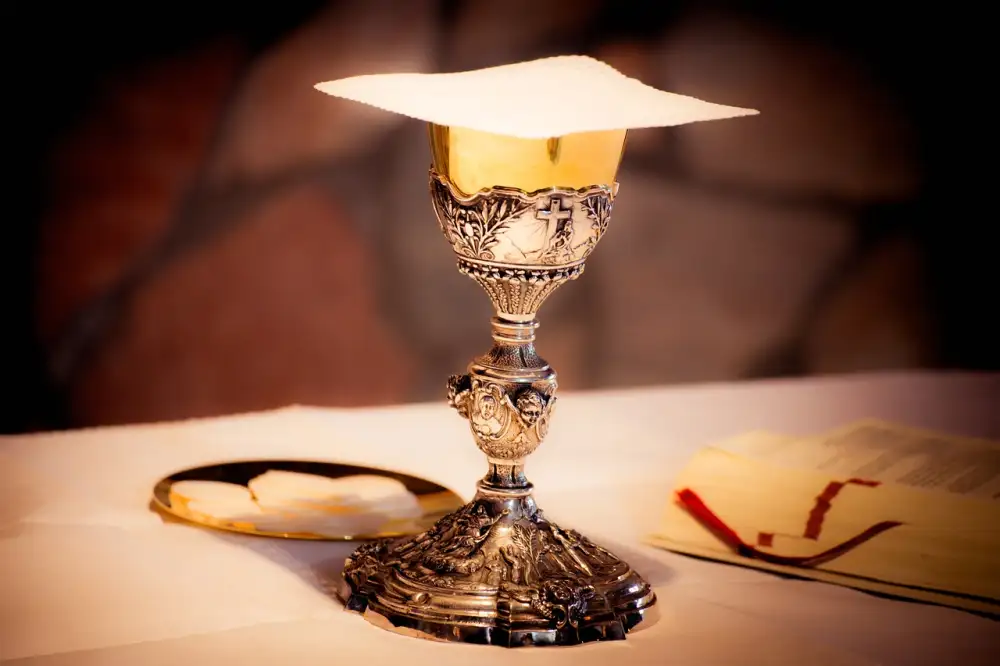Indulge in the Delightful Tradition of Easter Bread: A Scrumptious Recipe for Your Home

- History and Significance of Easter Bread in Different Cultures
- Ingredients Required for Making Easter Bread
- Step-by-Step Instructions for Preparing Easter Bread
- Tips and Tricks for Perfectly Baking Easter Bread
- Variations and Additions to Enhance the Flavor of Easter Bread
- Serving Suggestions and Pairings for Easter Bread
- Easter Bread: A Symbol of Unity and Renewal
Easter is a time of joy and celebration, and one delicious tradition that has been passed down through generations is Easter bread. This delightful treat holds a special place in the hearts of many cultures around the world. With its rich history and symbolic significance, Easter bread is not just a tasty treat but also a symbol of unity and renewal. Join us as we explore the origins, ingredients, and preparation of this scrumptious delight that will surely add an extra touch of sweetness to your Easter celebrations.
History and Significance of Easter Bread in Different Cultures
Easter bread holds a special place in the hearts and traditions of many cultures around the world. Its history can be traced back to ancient times, where it symbolized fertility and rebirth. In Greece, it is known as Tsoureki and is often braided with red-dyed eggs, representing the blood of Christ. In Italy, it takes on different forms such as Pane di Pasqua or Colomba di Pasqua, shaped like doves to symbolize peace. In Eastern European countries like Poland and Ukraine, Babka and Paska are popular variations that are rich in symbolism and religious significance. Each culture has its unique way of celebrating Easter through this delicious bread, showcasing the diversity and unity of traditions across the globe.
Ingredients Required for Making Easter Bread
To make a delicious Easter bread, you will need the following ingredients:
- 4 cups all-purpose flour
- 1/2 cup sugar
- 2 teaspoons active dry yeast
- 1 teaspoon salt
- 1/2 cup warm milk
- 1/4 cup unsalted butter, melted
- 3 large eggs
- Zest of 1 lemon or orange
- 1/2 teaspoon vanilla extract
These simple ingredients come together to create a soft and flavorful bread that is perfect for Easter celebrations.
Step-by-Step Instructions for Preparing Easter Bread
1. In a large mixing bowl, combine warm milk, sugar, and yeast. Let it sit for 5 minutes until frothy.
2. Add melted butter, eggs, vanilla extract, and salt to the mixture. Mix well.
3. Gradually add flour to the mixture while stirring continuously until a soft dough forms.
4. Knead the dough on a floured surface for about 5-7 minutes until it becomes smooth and elastic.
5. Place the dough in a greased bowl, cover with a clean cloth, and let it rise in a warm place for about 1-2 hours or until doubled in size.
6. Punch down the risen dough and divide it into equal portions depending on the desired size of your Easter bread.
7. Shape each portion into a round loaf or braid them together to create an intricate design.
8. Place the shaped loaves on a baking sheet lined with parchment paper and cover them again with a cloth. Allow them to rise for another hour.
9. Preheat your oven to 350°F (175°C) during this time.
10. Bake the Easter bread in the preheated oven for approximately 25-30 minutes or until golden brown and cooked through.
11. Remove from the oven and let it cool completely before serving.
Enjoy your homemade Easter bread!
Tips and Tricks for Perfectly Baking Easter Bread
When it comes to baking Easter bread, there are a few tips and tricks that can help ensure a perfectly delicious result. First, make sure to use fresh ingredients, especially yeast, as this will greatly impact the texture and rise of the bread. Secondly, knead the dough thoroughly to develop gluten and create a light and airy texture. Additionally, be mindful of the temperature of your kitchen as it can affect the rising process. Find a warm spot for the dough to rise, but avoid excessive heat which can kill the yeast. Finally, keep an eye on the baking time and temperature to prevent over or undercooking. These simple tips will help you achieve a beautifully baked Easter bread that is both visually appealing and irresistibly tasty.
Variations and Additions to Enhance the Flavor of Easter Bread
While traditional Easter bread is already a delicious treat, there are several variations and additions you can experiment with to enhance its flavor. Here are a few ideas:
1. Citrus Zest: Add a burst of freshness by incorporating the zest of oranges or lemons into the dough. This will infuse the bread with a delightful citrus aroma.
2. Spices: For a warm and aromatic twist, consider adding spices like cinnamon, nutmeg, or cardamom to the dough. These spices will give your Easter bread a cozy and comforting flavor.
3. Nuts and Dried Fruits: To add texture and sweetness, mix in chopped nuts such as almonds or walnuts, along with dried fruits like raisins or cranberries. These additions will provide bursts of flavor throughout the bread.
4. Chocolate Chips: If you have a sweet tooth, why not sprinkle some chocolate chips into the dough? As they melt during baking, they will create pockets of gooey chocolate goodness.
5. Almond Glaze: After baking your Easter bread, drizzle it with a simple almond glaze made from powdered sugar, almond extract, and milk. This glaze will add an extra layer of sweetness and make your bread even more irresistible.
Remember that these variations are just suggestions - feel free to get creative and experiment with flavors that you enjoy. The possibilities are endless when it comes to enhancing the taste of your Easter bread!
Serving Suggestions and Pairings for Easter Bread
Easter bread is a versatile treat that can be enjoyed in various ways. It can be served as a standalone dessert or paired with other delicious accompaniments. One popular way to enjoy Easter bread is by spreading a layer of butter or cream cheese on each slice. The creamy texture complements the soft, sweet bread perfectly.
For a more indulgent experience, try serving Easter bread with a dollop of Nutella or your favorite fruit preserves. The combination of the rich chocolate-hazelnut spread or the fruity sweetness with the fluffy bread creates an irresistible flavor combination.
If you prefer a savory twist, consider pairing Easter bread with slices of cured meats like prosciutto or salami. The saltiness of the meats balances out the sweetness of the bread, creating a delightful contrast.
Another option is to serve Easter bread alongside a selection of cheeses. Choose a variety of flavors and textures such as mild cheddar, tangy goat cheese, and creamy brie. The combination of the different cheeses with the soft, slightly sweet bread will create an elegant and sophisticated appetizer.
To enhance the festive feel, serve Easter bread with a cup of hot tea or coffee. The warmth and aroma of these beverages complement the comforting flavors of the bread.
No matter how you choose to serve it, Easter bread is sure to be a hit at any gathering. Its versatility allows it to be enjoyed as breakfast, dessert, or even as part of an afternoon tea party. So go ahead and experiment with different pairings to find your perfect combination!
Easter Bread: A Symbol of Unity and Renewal
Easter bread is not just a delicious treat; it also holds deep symbolic meaning. In many cultures, Easter bread represents unity and renewal. The circular shape of the bread symbolizes eternity and the resurrection of Jesus Christ. It is a reminder that Easter is a time for new beginnings and the triumph of life over death. Sharing Easter bread with loved ones signifies the coming together of family and friends to celebrate this joyous occasion. So, as you indulge in this delightful tradition, remember the deeper significance behind each bite of Easter bread.
As we conclude our journey into the delightful tradition of Easter bread, it is clear that this culinary masterpiece holds a special place in the hearts and homes of people around the world. Whether you follow a specific cultural recipe or add your own unique twist, Easter bread is a symbol of unity and renewal.
So this Easter, gather your loved ones, roll up your sleeves, and indulge in the joyous process of making this scrumptious treat. Let the aroma fill your home and create memories that will last a lifetime. As you take that first bite, savor the flavors and appreciate the centuries-old tradition that has been passed down through generations.
Easter bread not only satisfies our taste buds but also connects us to our heritage and brings us closer to our loved ones. So embrace this timeless tradition and let Easter bread become a cherished part of your celebrations. May it bring joy, love, and deliciousness to your table year after year.
Happy baking and Happy Easter!
Published: 14. 12. 2023
Category: Home



